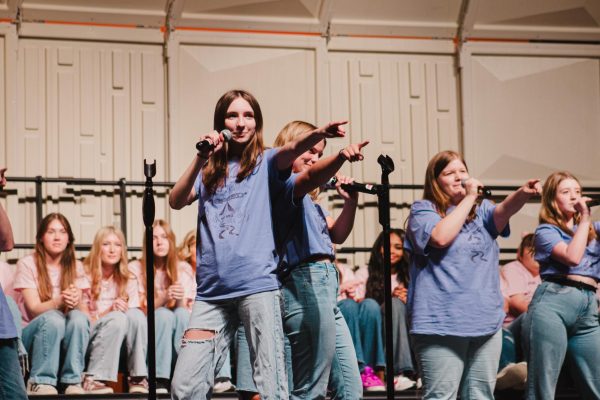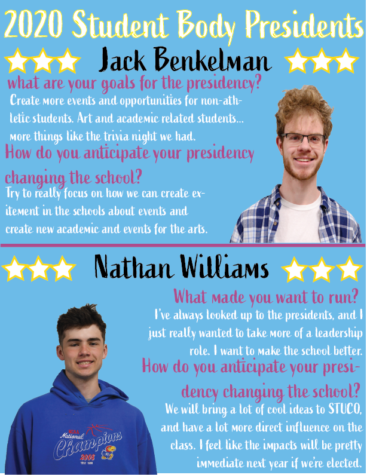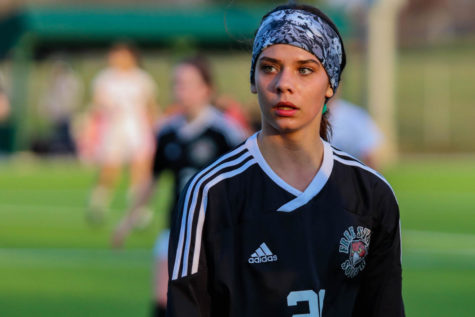School Redesign Part 1: Plan approved by staff, efforts begin
School redesign plan approved by staff, teachers question what happens next
“We customize everything everything,” graphic design teacher Michelle Salmans said. “We customize our phones, our laptops [and] our clothing. Why can’t we customize our education?
Salmans is referring to the upcoming school redesign project, dubbed “Kansans Can School Redesign.” The project is set to begin during the 2019-2020 school year, and will feature testing periods throughout the year to determine which programs will be fully implemented during the 2020-2021 year.
66 schools, including Broken Arrow, Deerfield and Hillcrest, throughout the state are also implementing the project, which has four key areas to reform: student success skills, personalized learning, real-world applications, and community partnerships.
“These are these four principles that we need to look at,” Salmans said. “We end up doing a lot of prototypes. I’ll call them trial runs of different programs.”
Salmans struggles with teacher burnout because she feels the current school system doesn’t engage many students, leaving them unmotivated to perform well academically. She hopes to resolve this by getting students excited to recieve an education
“[Salmans’ students] are… checked out [of school], and that’s really hard to do day in and day out,” Salmans said. “We spend so much time in school, shouldn’t we really enjoy being here?”
English teacher Sara Abeita feels the program presents an opportunity to change the school for the better, even though the administration hasn’t decided exactly which methods it will implement.
“I want to collect data about what our school needs and make changes that address those things,” Abeita said. “I would love to see a period in the day when students and teachers can meet one-on-one… Another thing I’d be really excited about is collaborating more with teachers from other departments.”
Abeita was motivated to get involved in the process of the redesign because of her frustration with the lack of innovation in teaching through the years.
“If you look at education today and compare it to education 100 years ago, not a lot has changed,” Abeita said. “This is an issue especially when you consider that the job market for our students looks much different than the job requirements 100 years ago.”
The project, which must be approved by at least 80% of staff members to be enacted, was voted on last year but failed to pass.
This year, teachers voted on the redesign in August, and the measure passed.
Abeita feels the project was approved this time because teachers in favor of the it took time during staff meetings to explain the redesign to teachers who were undecided.
“I think that last year the vote was very rushed, and a lot of people just didn’t fully understand what the redesign initiative was,” Abeita said. “So, this year I thought it was really important to make sure that everyone was informed and knew what their vote meant.”
English teacher David Roquemore also started working on the redesign after it was passed, his motivation stemming from dissatisfaction with the impediments, such as inefficient processes that don’t work for all students, within current educational guidelines.
Realizing his coworkers felt the same, he decided to take action.
“One major motivation for me was feeling inspired by the passion and commitment of my colleagues,” Roquemore said. “There are educators here at Free State who care deeply about students, but feel stifled and frustrated by barriers in our system.”
However, he isn’t without reservations.
“The history of education is built on the bones of initiatives, agendas, policies, and changes that never lived up to what they promised,” Roquemore said. “I don’t want to over-expect what redesign can accomplish.”
While she is overall in favor of the redesign, Abeita has also somewhat tempered her enthusiasm.
“A lot of the other schools in Kansas that have gone through this process talked about how many of their first ideas failed when they tested them. As someone who doesn’t like to make mistakes, that aspect of redesign is scary,” Abeita said. “No other school as big as Free State has gone through this process, so that… is kind of intimidating.”
However, Roquemore believes that concerns about the redesign program shouldn’t impede any possible progress there is to be made.
“I would rather try to help improve our school and fail than avoid trying at all,” Roquemore said.
Your donation will support the student journalists of Lawrence Free State High School. Your contribution will allow us to purchase equipment and cover our annual website hosting costs.










